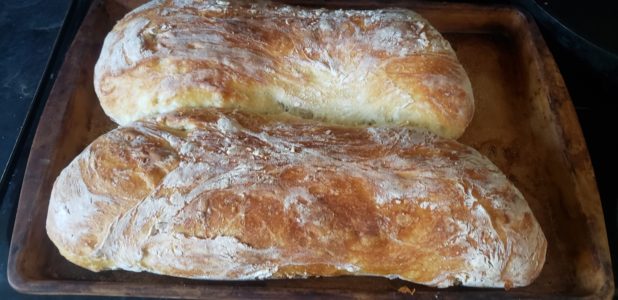General News
A nation of bread makers
April 14, 2020

April 14, 2020
By Chris Drost
During the first days of COVID-19 in Canada, it was not uncommon to see the entire sliced bread section of the grocery store empty. Like the toilet paper hoarding, overstocking of bread quickly led to shortages. This in turn, prompted shortages in flour and yeast as consumers considered their next best option, baking their own bread.
Bread is referred to as the “staff of life” because it is a very basic food found in almost all societies in one form or another.
Research led by a team of scientists from the University of Copenhagen found evidence of the remains of charred flatbread baked by a hunter-gatherer society in the Jordan River Valley in the Middle East some 14,400 years ago. The research, published in the journal Proceedings of the National Academy of Sciences, suggested that further research needs to be done to determine if the production and consumption of bread influenced the emergence of domesticated agriculture.
Egyptians are believed to have been the first people who made leavened bread, perhaps initially by accident when dough was left to sit for awhile before baking.
While baking bread was a regular chore in most households for hundreds, if not thousands of years, the access to industrially produced bread coupled with the trend to women working outside the home, means that many may have never experienced the joy of producing a fresh loaf.
One of the largest producers of yeast AB Mauri, has two factories in Canada where production is up 15 – 20 per cent due to increased demand.
With the shortage of yeast, there has been a surge in interest in purchasing or making sourdough starter from scratch. With sourdough, it gets its leavening from the starter which is a mix of flour and water that becomes bubbly, tart and grows its own natural yeast. While it has been around since ancient Egyptian times, more recently, California Klondike miners became known as “Sourdoughs” because they carried sourdough starter with them since they did not have access to yeast.
While sourdough starter can be easily made in about five days, it does require regular care. It needs to be “fed” with flour. While it traditionally can be shared with friends, it is recommended that during the COVID-19 pandemic it is ill advised to share your starter with a friend.
With access to the internet, simple recipes that do not require kneading are readily available, which is helpful for beginners. Sweet breads like banana bread or zucchini loaf are also good ways to use up fruit and vegetables that are past their prime.
The question remains, will the new bread-making skills that have been learned during the pandemic result in a lasting trend in baking homemade bread?
Simple no-knead bread
6 cups of white or bread flour
1 ½ tsp quick rise dry yeast
1 ½ tsp salt
3 cups lukewarm water
¼ cup cornmeal
Method
Mix flour, yeast and salt in a large bowl and then pour in the water. Mix 40 strokes using a wooden spoon until it forms a sticky ball. Cover with plastic wrap and set in an area away from drafts for two hours to let rise. After the two hours, turn it out onto a floured cookie sheet, cut it into two pieces and form each piece into a loaf approximately 14 inches long. Add a sprinkling of flour to the outside as needed, to ensure it is not sticky. Cover the loaves with a clean tea towel and let them rest for 40 minutes. In the interim, heat the oven to 450 degrees. Place your baking stone in the oven on the middle rack to pre-heat for 30 minutes. Place a broiler pan or cast-iron pan on the bottom rack to pre-heat. After the dough has been resting for 40 minutes, sprinkle the baking stone in the oven with cornmeal. This will give your bread a nice crispy finish and help prevent it from sticking. Add a bit of flour to any sticky parts and then roll the two loaves onto to heated baking stone in the oven, ensuring there is a space between them. Pour 2 cups of hot water from the tap into the broiler pan or cast-iron pan in the bottom of the oven. Bake for 27 minutes at 450 degrees. The outside should appear golden. Remove and let cool on a wire rack. Wrap in parchment paper when cool to keep the crust crispy.


















